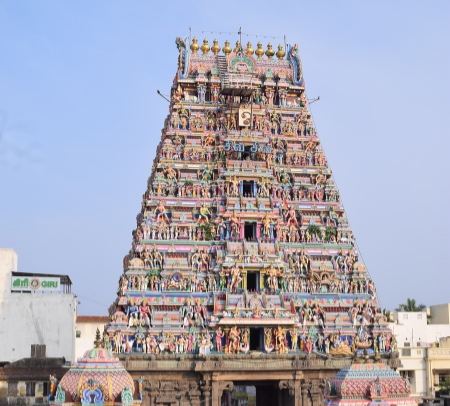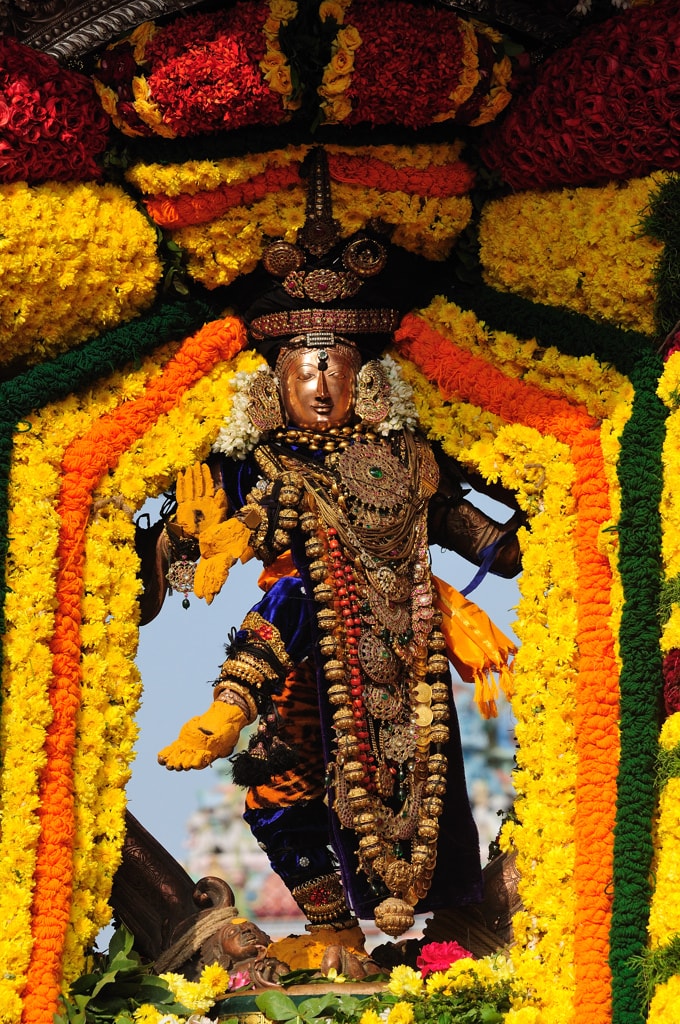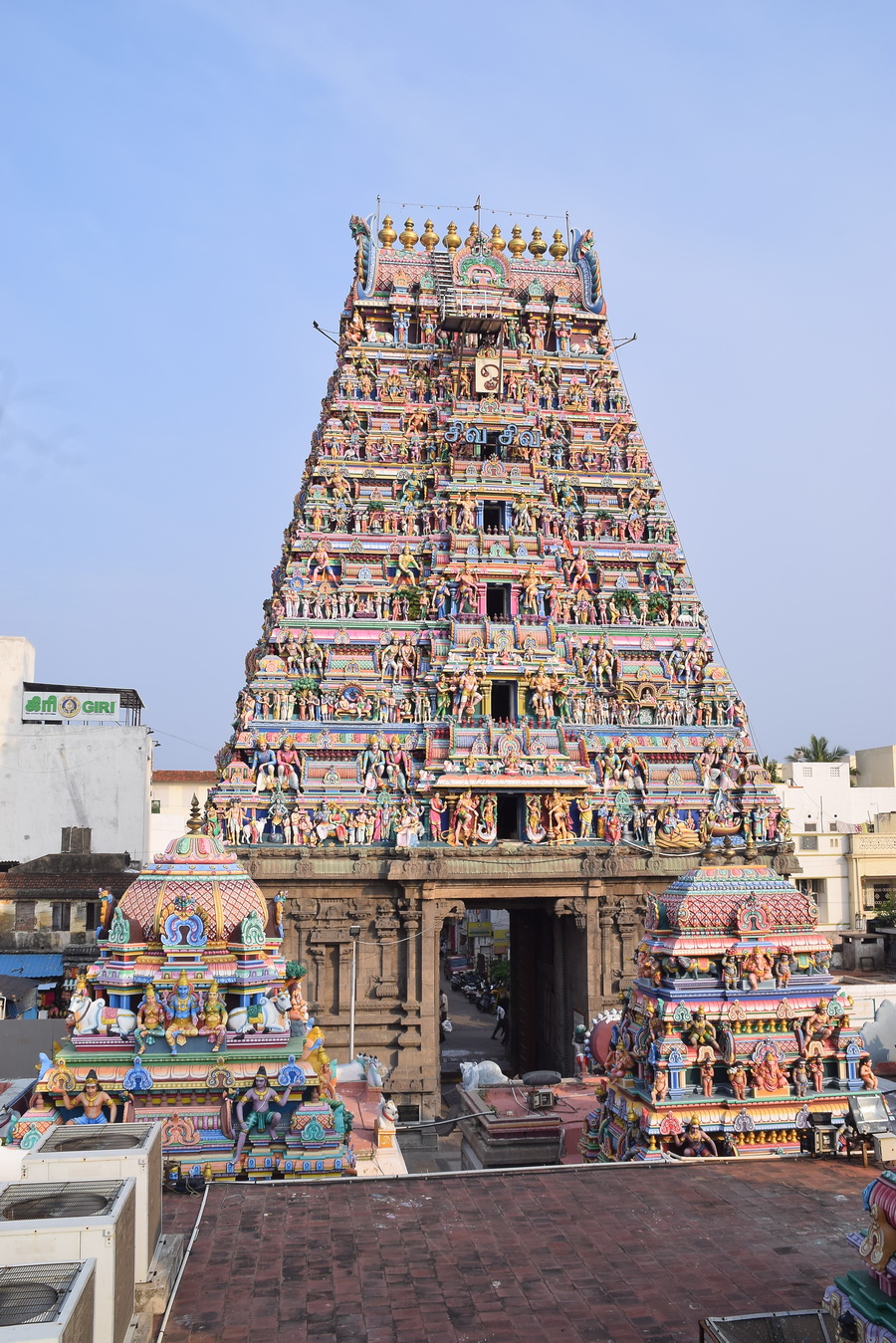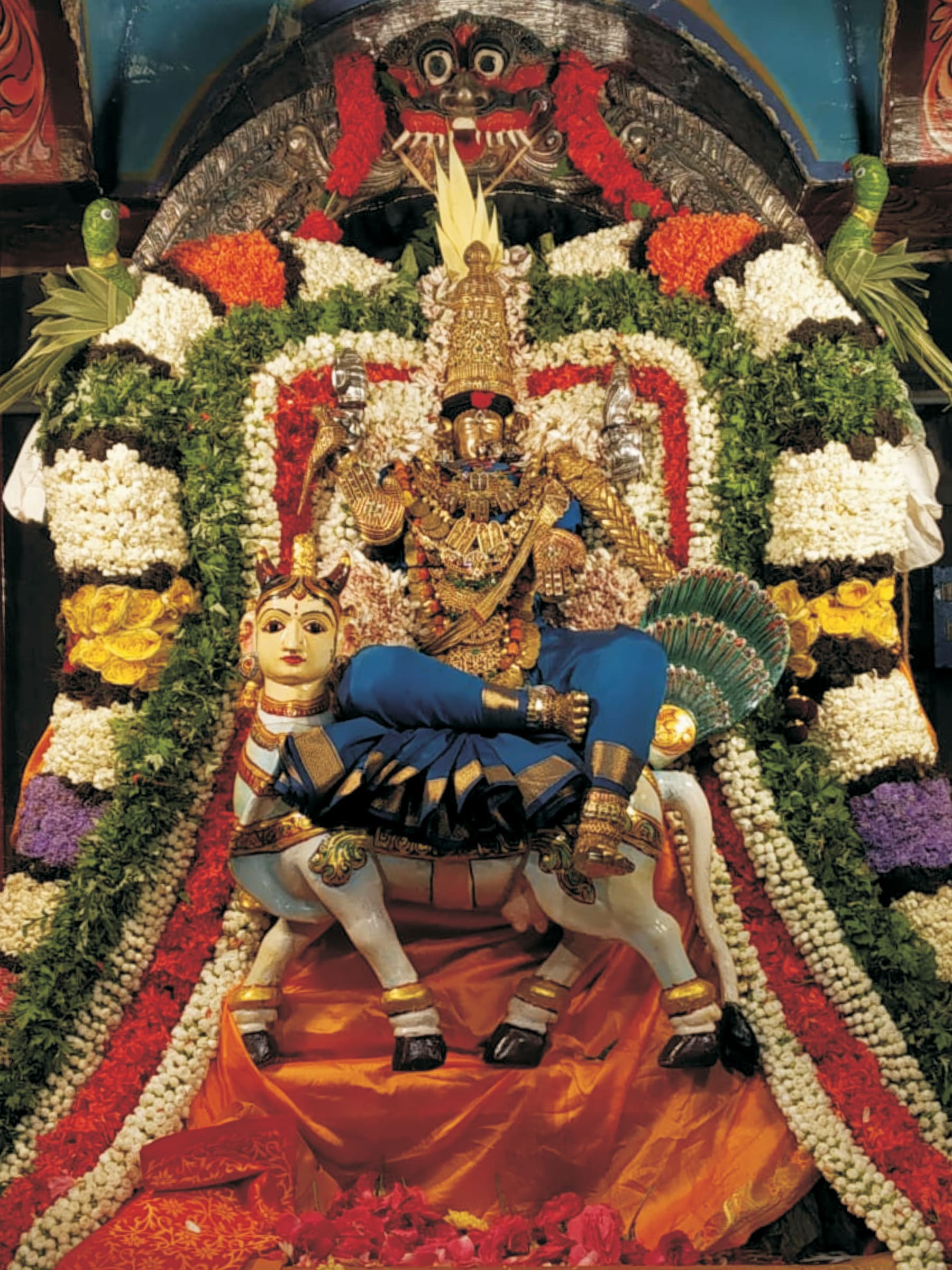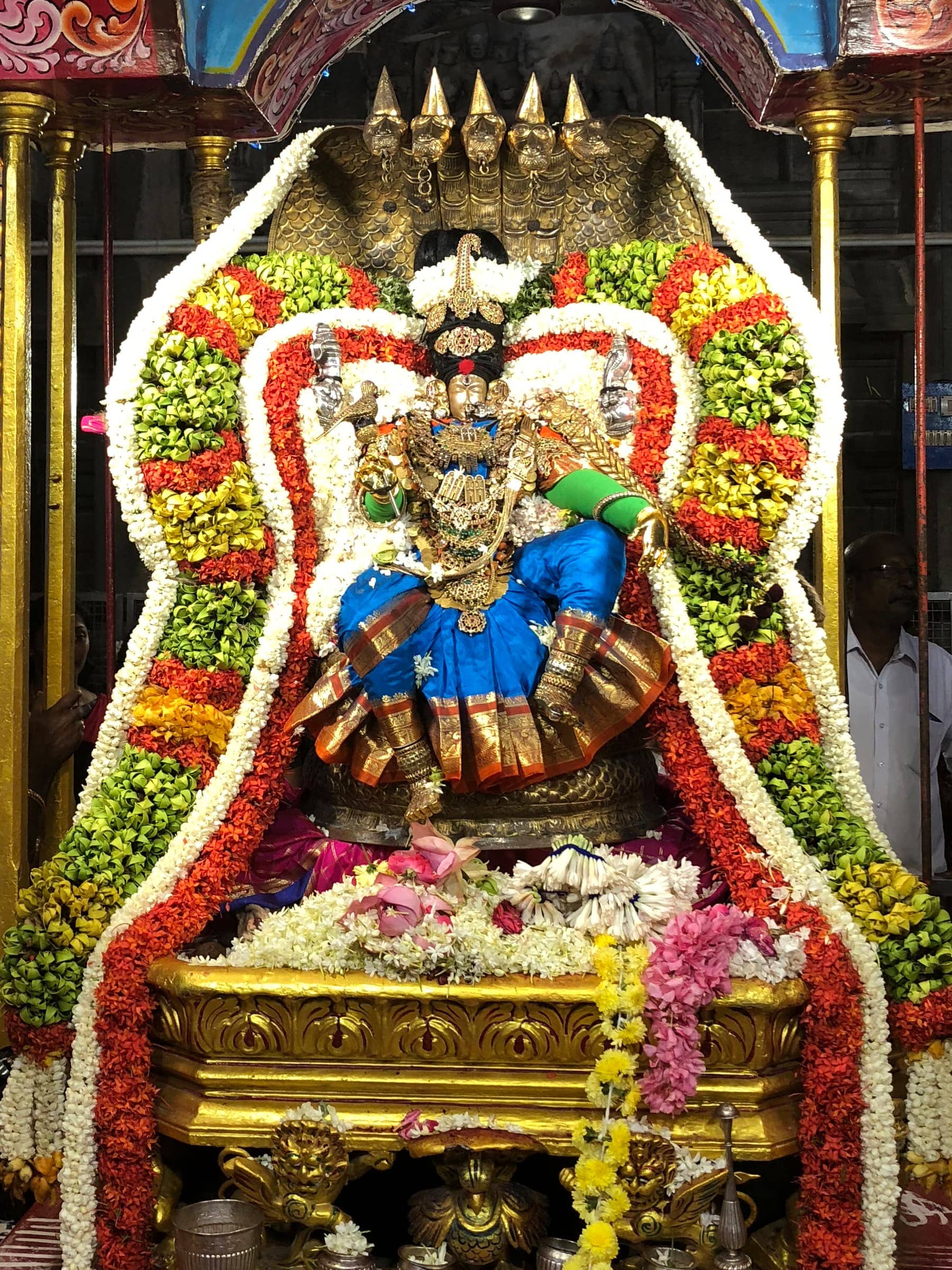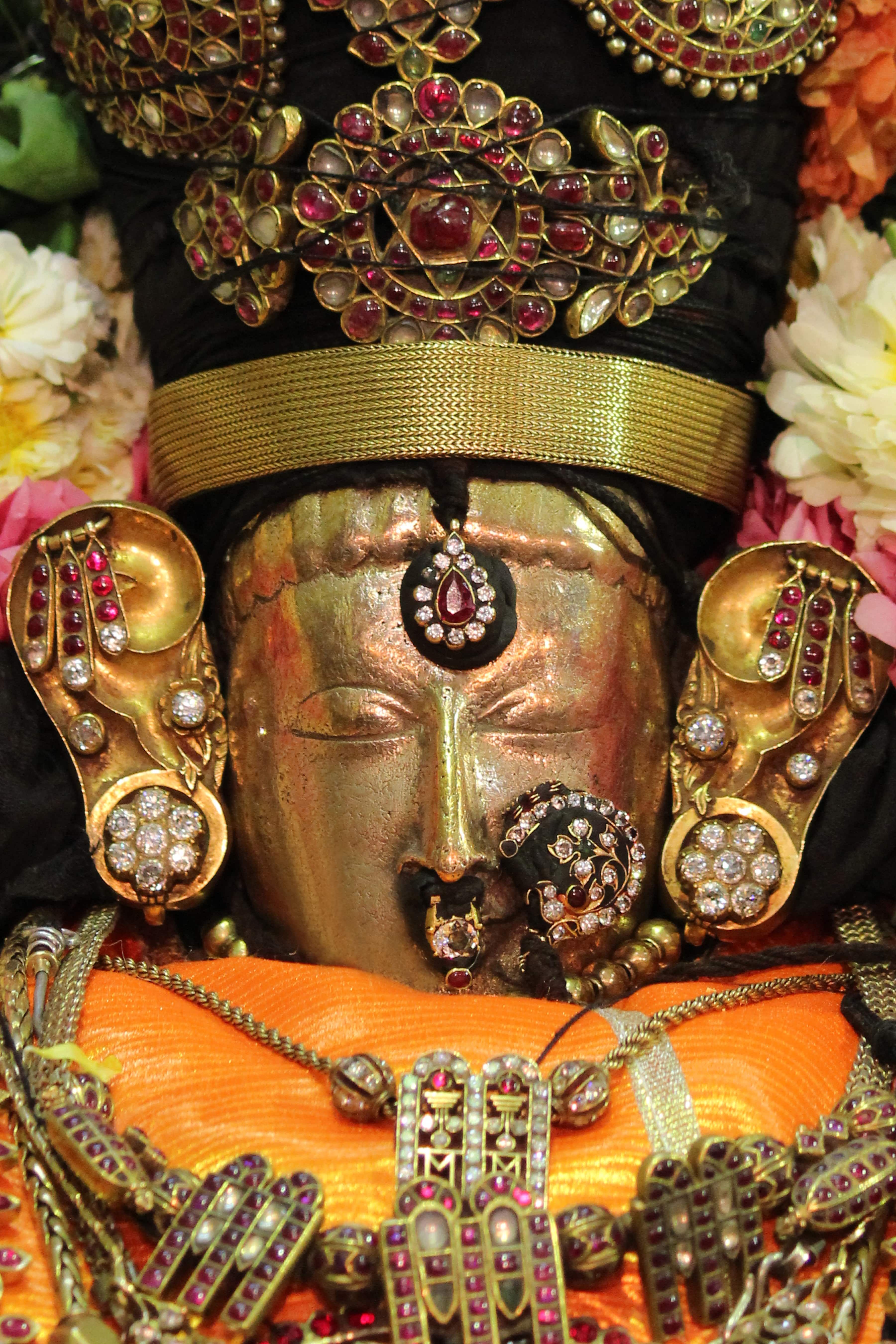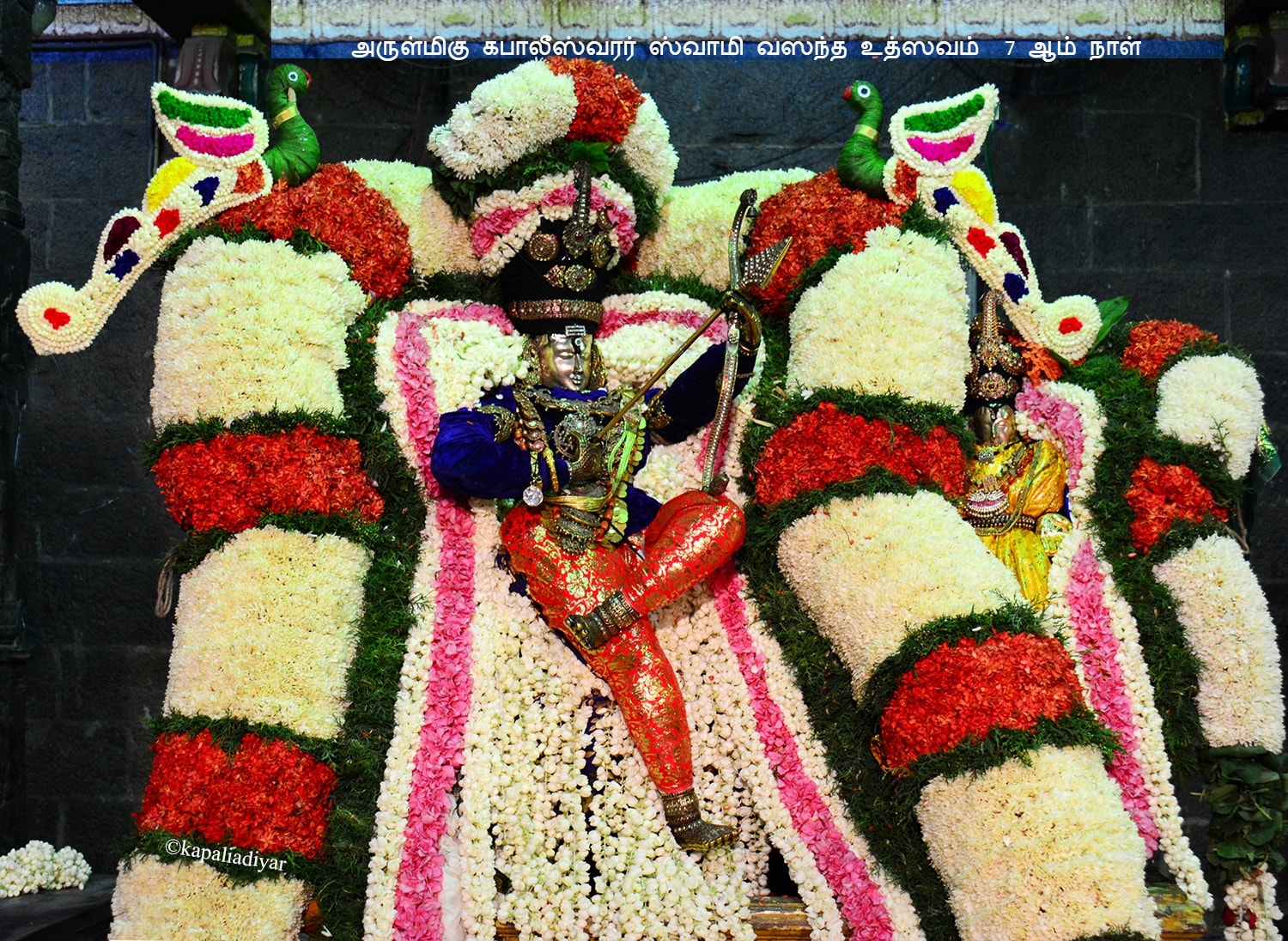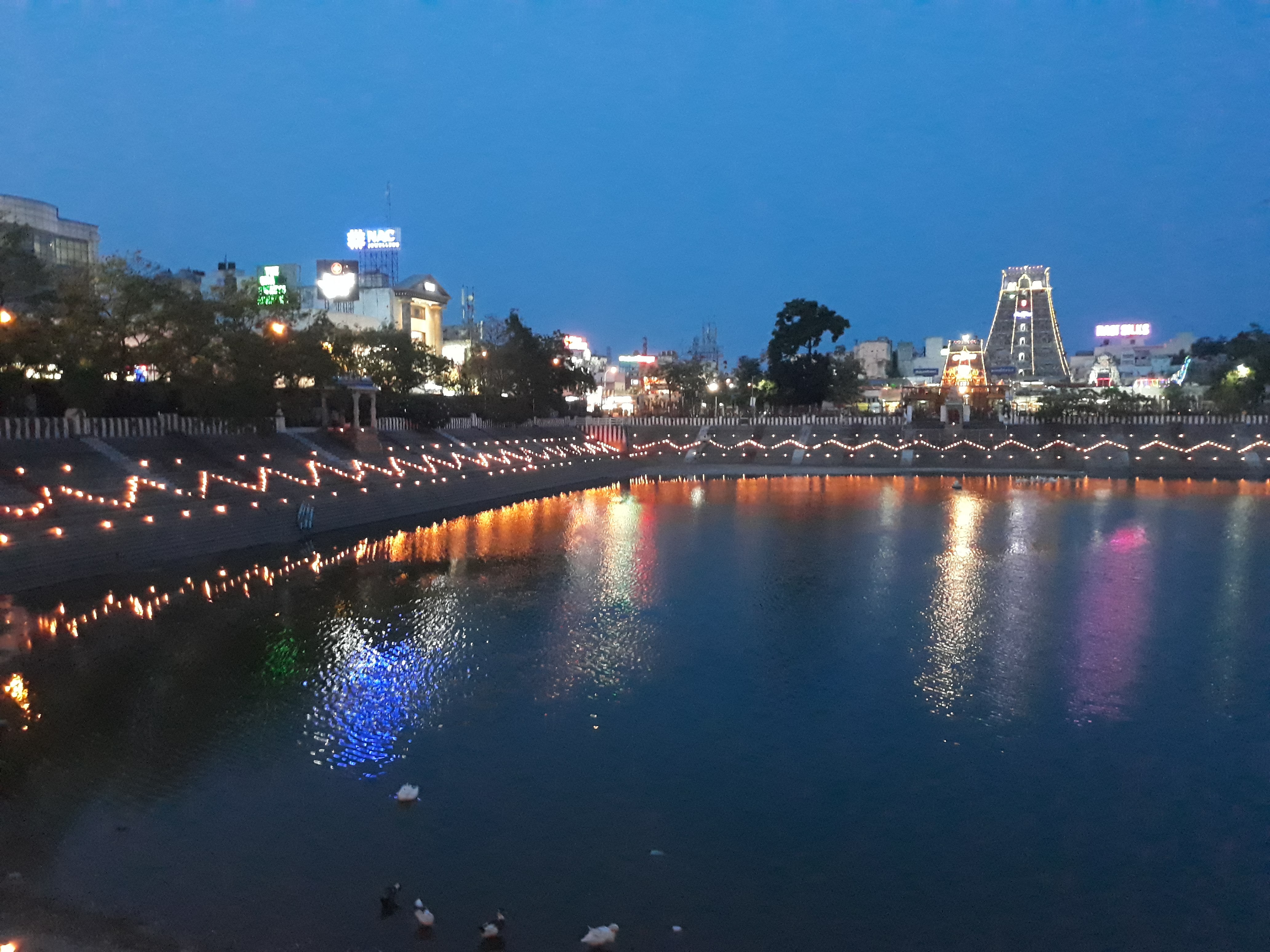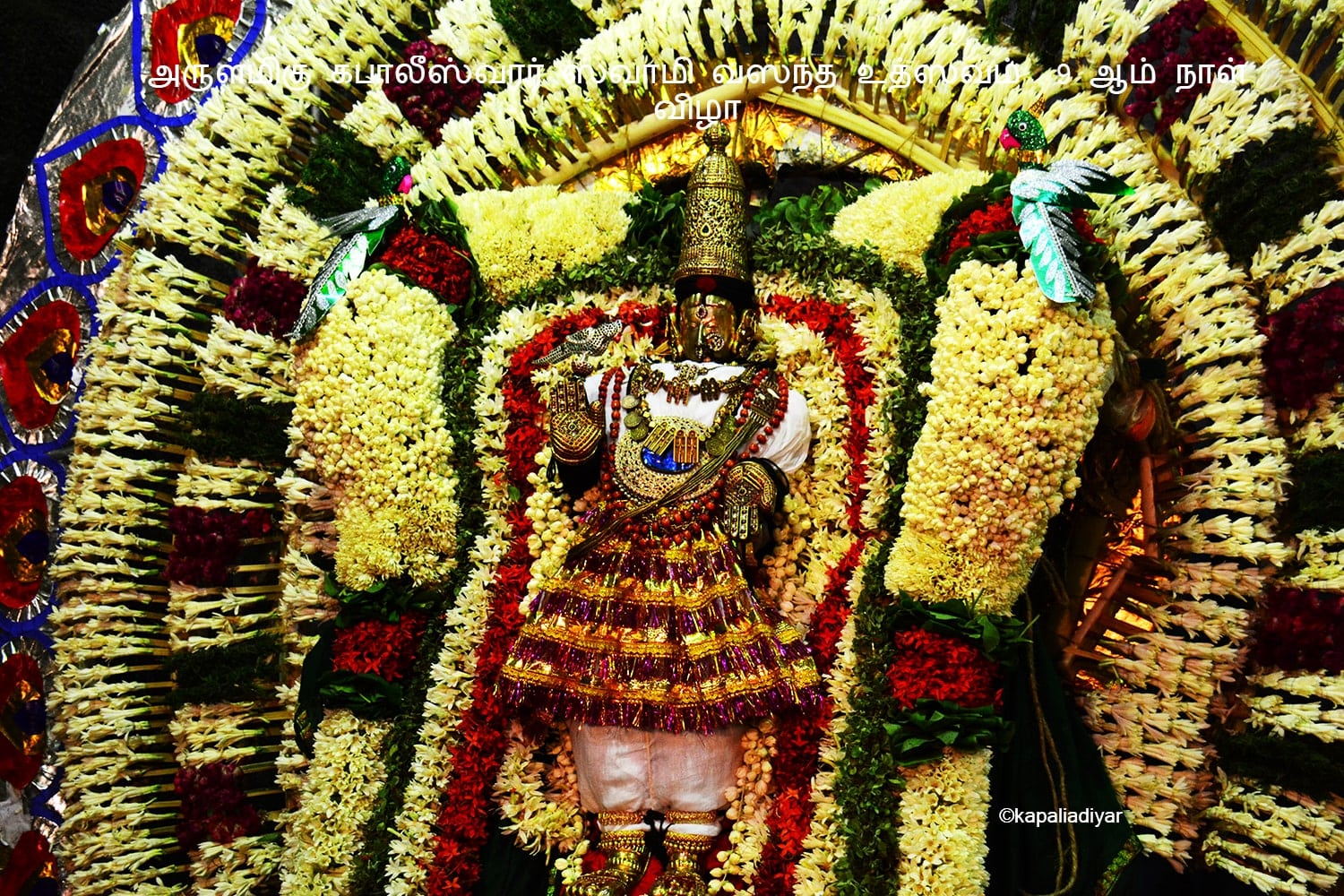Goddess Uma Performed penance here taking the form of a peacock.
This is the 24th Shiva temple in Thondai Nadu region praised in Thevaram hymns. Great Saivite Saints, Thirugnana Sambandar, Thirunavukarasar, and Sundarar
have sung the glory of Lord Kapaleeswarar in their hymns.
According to ancient legends and history, this temple is associated with many divine incidents that reflect how the name mylai came to existence.
All the highlight the significance and effectiveness of uttering the words Om Nama Shivaya.
Once, Goddess Uma desired to know the complete interpretation of the five letter mantra Na Ma Shivaya and the splendor
of the sacred ash (Vibuthi). Goddess Uma persuaded Shiva to touch teach her. Shiva consented and commenced teaching.
However Goddess Uma was distracted by a beautiful peacock and her attention wandered. Siva was infuriated and cursed her
to go to sacred Thondai Nadu and perform penance. Goddess Uma worshiped the Shivalinga under the punnai Tree in the
temple vicinity. Moved by Goddess Uma utmost devotion, Lord appeared before Her and released Her from the curse and
fondly called her Karpagavalli. Goddess Uma requested Lord Shiva to name the place Mylapore and stay back with her to
bestow blessings on all the devotes. Accordingly, Mylai became the abode of Kapaleeswarar and Karpagambal.
